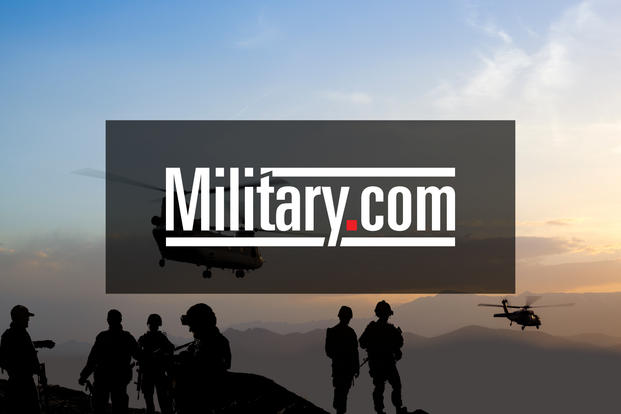A year has passed since MultiCam won the U.S. Army's camouflage competition, but makers of the pattern said the service still refuses to pay what the market demands for more effective camouflage.
Sgt. Major of the Army Raymond Chandler said the Army was compelled to abandon its plan for replacing its ineffective Universal Camouflage Pattern when Congress ordered the Pentagon to stop the services from branding their ranks with unique camouflage uniforms.
Army uniform officials are now considering a new camouflage strategy, one that involves more testing and possibly adopting the Marine Corps desert and woodland patterns for specific operational environments.
But now new information offers a different explanation for the Army's reluctance to adopt MultiCam pattern.
Crye Precision LLC, the inventor of the MultiCam pattern, just released an account of the Army's negotiating techniques, beginning when Product Manager Clothing and Individual Equipment officials contacted Crye Precision last May.
"Crye was advised by PM-CIE leadership via teleconference on May 1, 2013 that its submission had won the final program phase of the camouflage improvement effort, and that a formal announcement would be forthcoming," the Crye Precision release states.
The Army had already been purchasing MultiCam uniforms and equipment for troops in Afghanistan since 2010.
But Army officials were surprised that vendors planned to charge up to 20 percent more for MultiCam uniforms and equipment than what the Army was used to paying for clothing and gear printed in UCP, Crye officials said.
"Army representatives approached Crye to discuss the market's pricing of MultiCam gear (such as uniforms) and told Crye that it would have to deliver 'significant cost savings,'" Crye officials said.
Caleb Crye, executive director of Crye Precision, said the Army doesn't believe that Crye Precision does not control the prices vendors charge for MultiCam. The company does get "printing fees" from companies, but that only accounts for about 1 percent of the price hike companies are charging for MultiCam, Crye said.
"They attributed the cost difference to us incorrectly," said a clearly frustrated Crye official during a March 19 phone interview with Military.com. "The Army doesn't get its uniforms from Crye yet it is complaining to us that the uniforms cost more. We don't control how vendors price things."
In October 2013, the Army released a Justification and Approval that it planned to issue MultiCam as the Army's "principle camouflage pattern," Crye officials said.
"Crye submitted several formal proposals which proved that the Army could procure MultiCam gear at prices within 1 percent of UCP gear," the Crye release states. "Crye's proposals additionally showed that this could be accomplished with no upfront cost to the Army."
"The Army rejected all of Crye's proposals and did not present any counter proposals, effectively saying that a proven increase in soldier survivability was not worth a price difference of less than 1 percent."
Program Executive Office Soldier representatives did not respond to an interview request from Military.com by press time.
Army officials then requested a buyout price for MultiCam, but Crye officials were reluctant to sell the service the rights to the MultiCam brand.
This course of action would require Crye to cede quality and brand control to the Army, effectively undermining Crye's commercial market permanently, Crye officials said.
"There is no way you could police the quality anymore," Caleb Crye said. "Right now we are the responsible parties. We have lawyers just for that -- all they do all day is police it."
A buyout price would have to include the entire lifetime value of the MultiCam brand, making it expensive, Crye officials said.
Crye officials finally agreed to provide a buyout price request -- $24.8 million according to an Army source familiar with negotiations.
"Crye's offer was rejected outright by the Army," Crye officials said. "No official counter offers to any of Crye's proposals were ever provided to Crye by the Army."
Army uniform officials launched the service's camouflage effort after Pennsylvania's Democratic Rep. John Murtha, got involved in the issue in 2009. Murtha was then chairman of the House Appropriations Subcommittee on Defense. He pushed the service to look for a better camouflage pattern after receiving complaints from sergeants about the UCP's poor performance in the war zone.
Murtha died in 2010, just before the Army selected MultiCam as the clear winner over several other patterns to issue to soldiers deploying to Afghanistan.
Some test community officials maintain that the 2004 adoption of the UCP was a mistake that could have been avoided, saving the Army billions of dollars on uniforms and matching equipment.
Critics of the UCP maintain that the service has spent $5 billion on uniforms and equipment all printed in the inadequate UCP.
Two separate studies performed by Army scientists from Natick Soldier Systems Center, Mass. -- one completed in 2009 and the other in 2006 -- showed that the UCP performed poorly in multiple environments when compared to other modern camouflage patterns.
In both studies, MultiCam, a pattern popular with Special Operations Forces, outperformed UCP.
-- Matthew Cox can be reached at Matthew.Cox@monster.com.





























